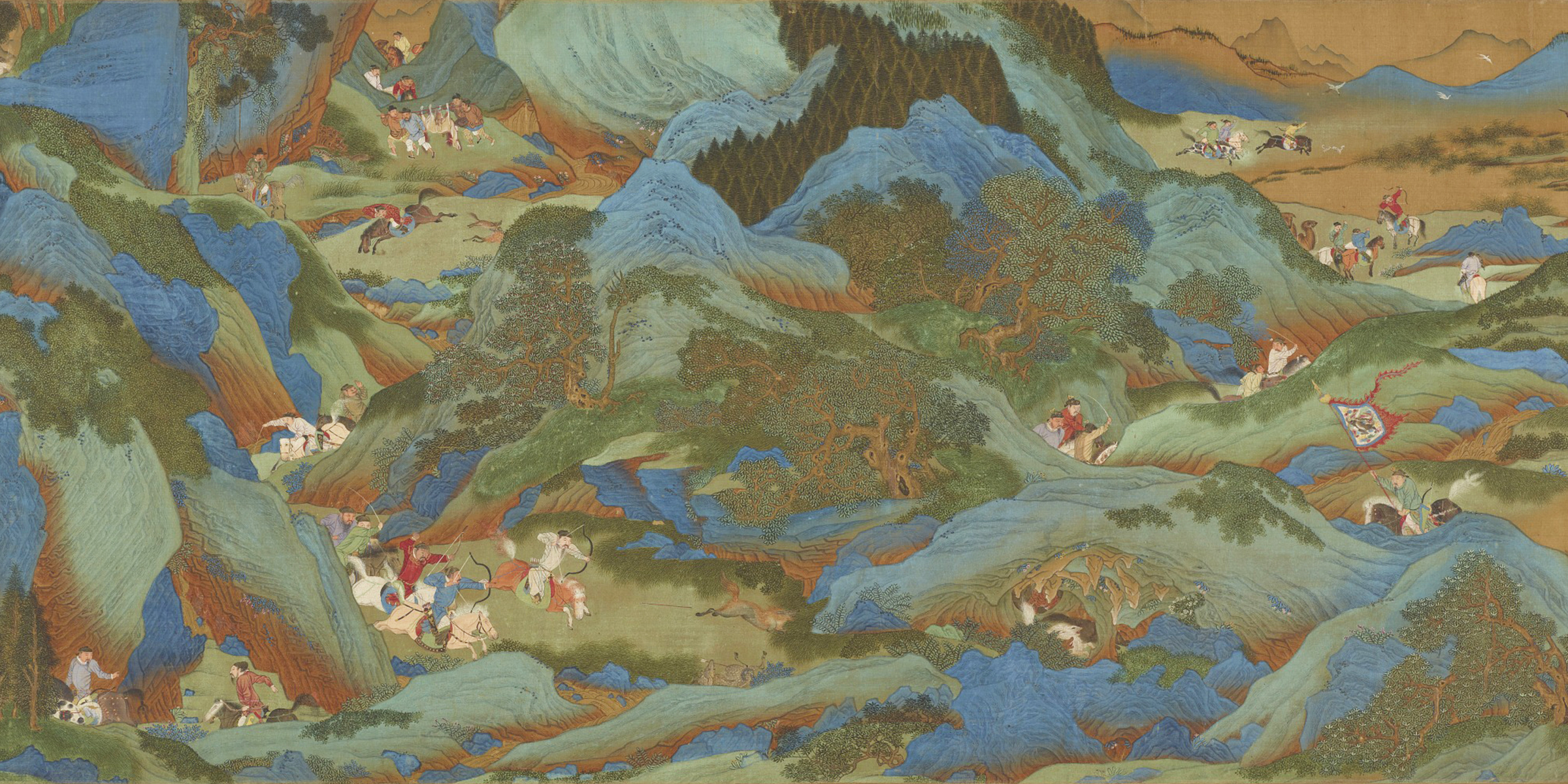When the ruler wants a plank, his ministers tear down a tree.
—Huainanzi, second century bc
When you read texts from early China, stretching across a thousand-year period from the ninth century bc into the second century, two principles of nature stand out. First, the Chinese emphasize that everything in the natural world is interconnected, interrelated, and interdependent. This means human conduct—both personal behavior and the way we organize society, government, and politics—was thought to be deeply implicated in the workings of nature and the cosmos at large. In turn, human society was said to be influenced by events in the natural world, and failing to heed the signs of nature could be calamitous. A second feature is that the Chinese did not isolate nature as a disconnected and purely biophysical world (as the scholar or scientist would do in the study or laboratory). For them, explaining the natural world meant identifying the resonance between natural species and events on the one hand and human response on the other.
Harmony with the natural world—called the “Unity Between Heaven and Man”—is at the core of traditional Chinese philosophy, as were arguments for the sustainable use of resources. Exploitation and conservation were understood as complementary opposites; they are yin and yang. So, theoretically at least, human attitudes toward the wilds and the management of nature had to follow proper timing: in order to take from nature during the season of abundance, nature had to be left untouched during the seasons of growth. “In the first month of spring, do not turn over nests or kill unborn young,” a third-century-bc calendar known as The Monthly Ordinances advises.
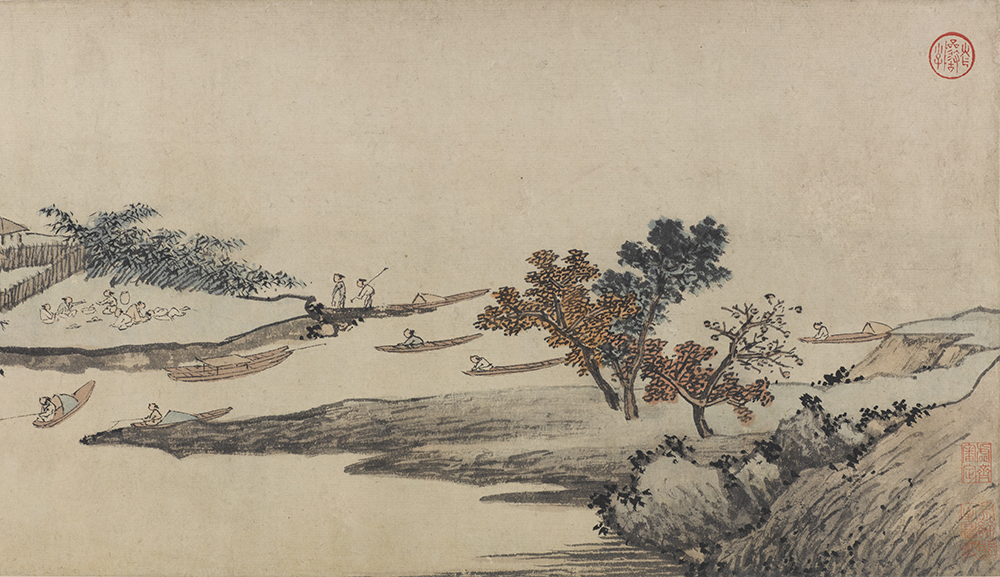
Ancient China’s sages sometimes seem like proto-ecologists. Take Confucius (551–479 bc), who was said to fish with a line but not a net, used only stringed arrows (to ensure he could retrieve his catch), and never aimed at roosting birds. He praised disciples for throwing back undersized fish and spoke of the unseasonable killing of one animal or the untimely loss of a tree as an act “contrary to filial piety,” thereby making it a crime as serious as harming one’s parents and elders. The fourth-century-bc Confucian thinker Mencius notes there would be more fish and turtles than anyone could eat if people didn’t use close-meshed nets to trawl pools and ponds. Ritual texts stipulated that a good ruler (also known as the Son of Heaven) should never surround an entire flock or round up a whole herd. Animals killed out of season were not to be sold on the markets, and pregnant animals were not to be eaten or sacrificed. China’s sage kings of antiquity were portrayed as moral hunters, who killed but did so in a considered manner and without depleting nature’s resources. In his landmark history the Shiji (Records of the Historian, completed circa 100 bc), Sima Qian tells of King Tang, founding king of the Shang dynasty:
Once King Tang went out of the city and saw someone who had set nets on all four sides in a field, praying, “From all four sides under heaven may birds fall into my nets.” Tang said, “Hey! This would exhaust them.” Then he took the nets away from three sides and prayed, “If you wish to go to the left, go to the left. If you wish to go to the right, go to the right. If you don’t listen to this order, you will fall into my net.” The feudal lords heard of this and said, “Tang’s virtue is the highest. It even extends to birds and beasts!”
While ancient civilizations did not speak the language of modern conservation, they did develop sophisticated ways to manage nature. The Rites of Zhou (most likely compiled in the second century bc) describes the work of functionaries in the royal state of Zhou. These officials were charged with a wide range of duties: gathering exotic species; collecting sacrificial meats; breeding, herding, and training domestic animals; taming wild species; providing veterinary treatment; managing animal tributes and parks; maintaining stables; preparing animals for rituals; collecting taxes on animal horns and bird feathers; settling legal disputes involving animals; expelling venomous species; and organizing hunting and fishing seasons.
China’s ritual calendars stipulated how human activity should be timed according to season. During the spring, axes and halberds were not permitted in mountain forests. Fishnets and poisonous pellets were banned while sea turtles, water lizards, and other aquatic creatures were depositing eggs in the marshes, giving those species a better chance to mature. Access to lakes, streams, parks, and ponds were closed periodically, and entry to the general public was strictly regulated. To preserve timber, cutting and pruning, as well as growing and planting, had to occur in the correct season. Although the primary goal of these regulations was to optimize agricultural output and maximize returns from hunting and foraging, they could be considered early examples of environmental law, revealing an intent to conserve. Regulating access to natural resources also protected the farming season by preventing those tempted by the natural riches of the forests and rivers from abandoning the fields, which is where the state needed their labor. The underlying motives for conservation were to a large extent utilitarian: safeguarding nature’s productive force. (In ancient societies, nature was rarely conceived of as a part of the world separate from and untouched by humans.)
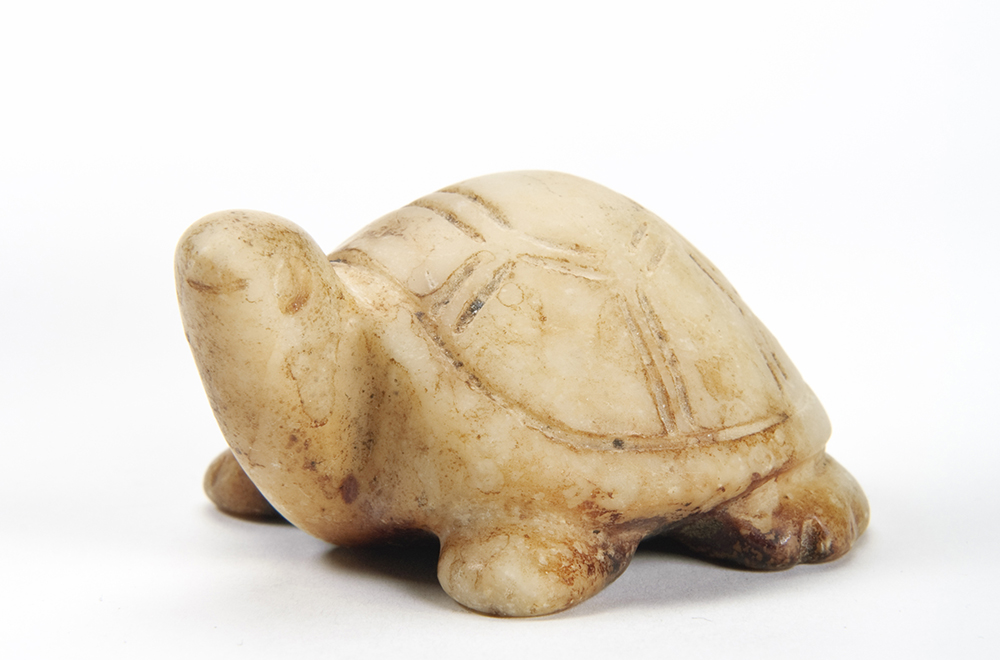
The consequences of pushing nature to its extremes were acknowledged regularly by philosophers and courtiers. The Spring and Autumn Annals of Mr Lü (compiled circa 239 bc) warns, “If you overturn birds’ nests and smash their eggs, auspicious phoenixes will not arrive. If you rip open wild beasts and eat their fetuses, the auspicious unicorn will not come. If you dry up the marshes and land the fish they contain, auspicious dragons will not appear.” One official describes the environmental perils of mining in 44 bc with ominous foresight:
People drill several hundred feet into the earth, destroying the essence of the yin qi [vapors]. The soil is plundered until it is empty and is no longer able to hold the qi from which clouds are formed. They cut down trees and forests, and they ignore the prohibitions and the right seasons for cutting. How can we not be sure that disastrous droughts will not result from this?
Just as humans had an effect on nature, so nature could have an impact on the human realm. Significant signs in nature had to be taken seriously—these omens could indicate that human activity had veered off course. Locust plagues, tiger attacks, epidemics, or species born with physical abnormalities were interpreted as nature’s responses to human events or as signs of inauspicious and turbulent times to come. One account from the Book of Later Han relates how a southern district was plagued by tiger and wolf attacks around 110. The governor explained in an edict that human intrusion on the tiger habitat combined with extravagant poaching had caused the plagues:
In general, the residence of tigers and wolves in the mountains and forests is like the residence of human beings in cities and markets. In antiquity, in the age of complete moral transformation, wild beasts did not cause any trouble. All this originated from the fact that grace and trust were wide-ranging and abundant, and benevolence reached the avian and running species. Although I, your governor, personally possess no great virtue, how could I dare to neglect this righteous principle? Therefore when this note arrives, let cages and pit traps be destroyed, and do not recklessly go trapping in mountains and forests.
Disorder in nature indicated a society malfunctioning or the moral failing of those in power. Weird animal behavior, abnormally shaped plants and trees, snow in summer, earthquakes, hurricanes, and other freaks of nature appeared for a reason. Such unusual changes in nature resulted from unwanted changes in the sociopolitical world. Heaven, as supreme power, showed its will through natural disasters and bizarre events. Consider this 644 bc incident, reported in the Book of Han:
When six fishhawks flew backward over the capital of the state of Song, this was a sign of political opposition. When white fish jumped into a boat, that was a sign of compliance. As for omens of enlightenment and gloom, above this can be seen in disorder among flying birds, below it is seen in movement among the fish in the springs. The meaning of each omen can be extrapolated according to its kind.
Court historians also meticulously reported on natural disasters. Then as now, whether or not an event should be declared a natural disaster was subject to political interpretation. A flood could be explained as the result of local officials neglecting to maintain the riverbanks, but it also could be deliberately man-made—for instance, when dikes were pierced to flood enemy cities or territory. Raging waters could bring despair to those who ruled. “Why are you so cruel? Your surging floods do not cease. You grieve my people!” rang a despondent plea by Emperor Han Wudi to the river gods when the Yellow River had once more broken its banks in 109 bc.
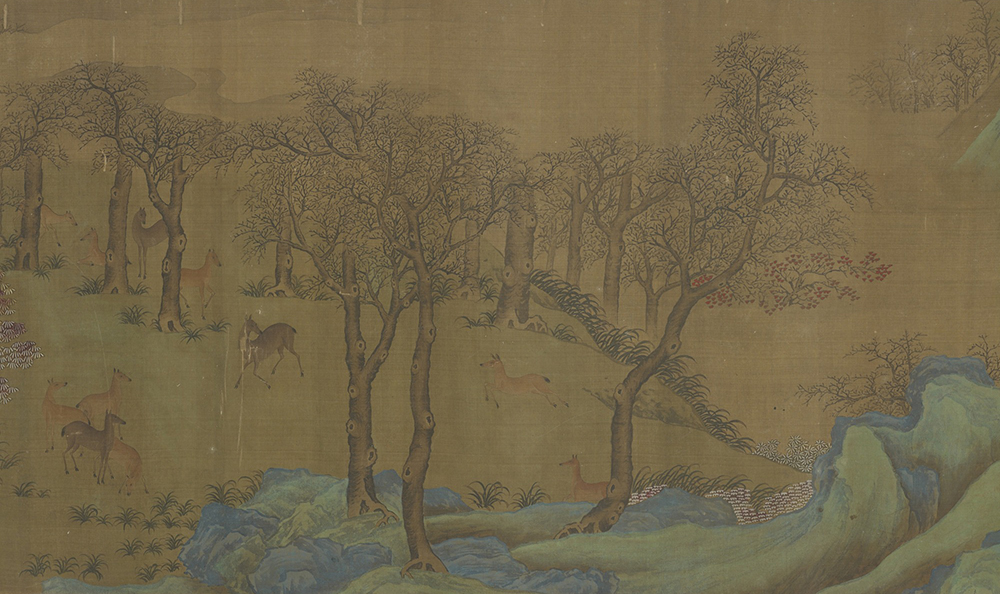
China’s official histories are keen to point out that disasters occurred more often during times of political instability. Moreover, the lasting imprint left on China’s landscape by large-scale construction projects are not exclusively products of the modern age. Running over more than a thousand miles, the network of waterways known as the Grand Canal was no less ambitious in scale during the seventh century than the Three Gorges Dam of today. It became the economic artery linking the fertile Yellow River floodplain to the agricultural heartlands of China’s central plain and the southern Jiangnan region.
Confucian moralists often depicted an idealized world where each and every species existed in abundance and harmony alongside one another. Yet history—in China and elsewhere—has not always obliged by presenting such a world. The prescriptive insistence on the need for harmony and ecological balance in ancient Chinese texts may indicate that, in reality, such harmony was often lacking. The ambition of man to conquer nature belongs to all times and places. In a society where power mostly resided in the hands of a monarch, there was always the risk of its disproportionate use. All natural resources in ancient China—mountains, marshes, forests, waterways, parks—were considered the monarch’s private property. As the Huainanzi, from the second century bc, puts it, “When the ruler wants a plank, his ministers cut down a tree; when the ruler wants a fish, his ministers dry up a valley.” Legal statutes dated 217 and 186 bc, from the Qin and Han periods, list punishments for trespassers as well as for officials who mismanaged such resources. In principle, the good Chinese sovereign shared nature’s treasury with his people, as Mencius eloquently proposed. Accounts survive in which the natural world acts as the moral arbiter to remind those in power of their obligations to share its bounty with the people. Village elders in one fishing community off the coast of Shandong once reported that fish stocks were hiding deep in the sea after the court had placed an unfair monopoly on sea products at the expense of local people. Yet as soon as permission for free fishing was granted again, those fish resurfaced, ready to be caught.
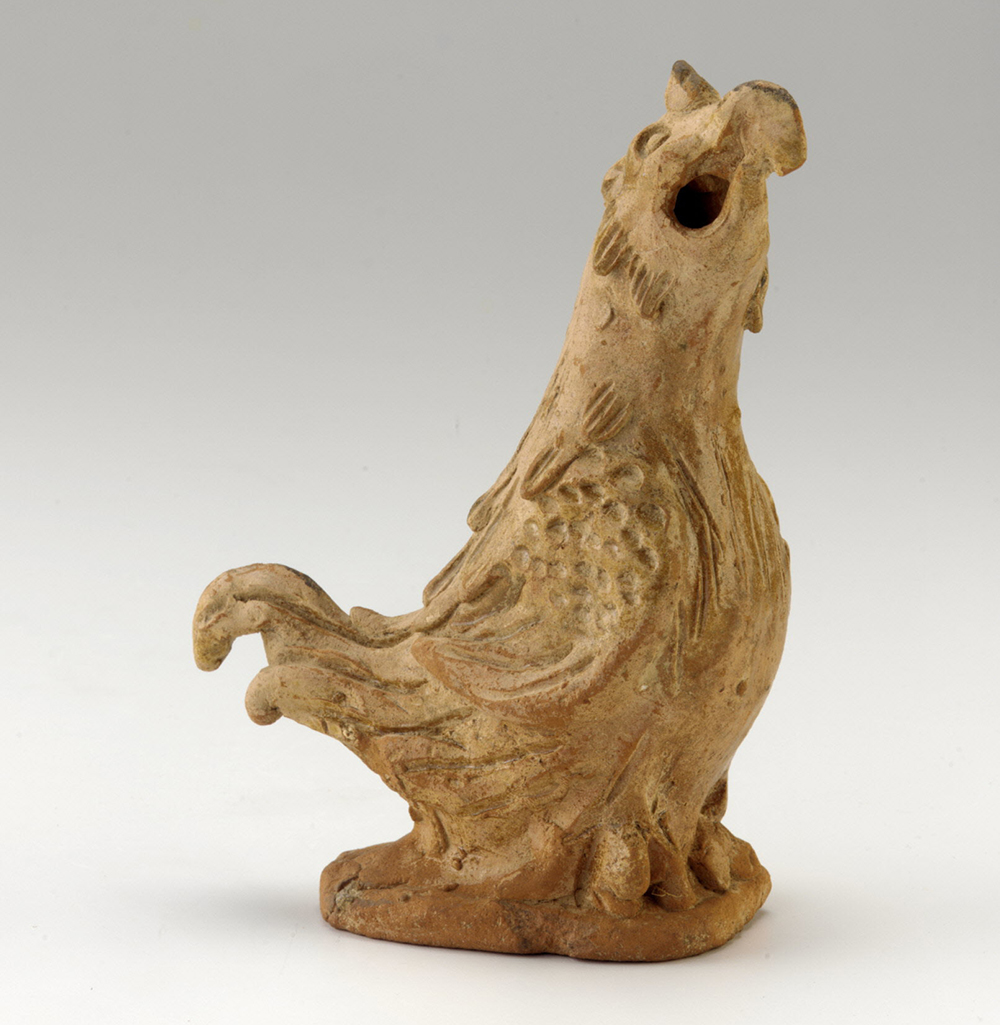
When communities use moralizing and figurative language to describe nature, it is tempting to treat it as fable or allegory and deny that it communicates valuable information. Calling the crow or raven “filial” or “righteous,” as did the ancient Chinese, is not far-fetched if it reflects the observation that the young offspring of crows and ravens continue to reside with their parents and defend territory after they have matured. In China, moralizing jargon, metaphors, and analogies were the stock vocabulary through which thinkers explained the natural world. For instance, the rooster, which stands out among its avian peers for its timely crow that separates day from night and induces all bird species to resonate, was a good Confucian: its crest embodied cultured civility, its spurs stood for martial power; it is benevolent as it calls its companions when it finds food, and trustful because its calls are a reliable prompt to start the day.
For China’s literati and well-to-do officials and aristocrats, nature offered a world of refuge, reflection, hermitage, and distance from society. But for most of its ordinary people, China’s wilds—those lands untouched by farming—were not a Daoist dreamland. Nature was linked to the treasury. It was the private property of those in power, a resource that could be commodified and exploited by a privileged few. It provided goods, wealth, and entertainment for the powerful and well-off. Although Chinese thought is very much human-centered, from China’s early days its philosophers were well aware that the moral divide between humans and nonhuman species remains fragile. As Mencius put it, “What distinguishes humans from birds and beasts is but small. Ordinary people cast it aside, only the gentleman preserves it.” A core message that cuts through China’s philosophical landscape is one of moderate usage, holding on to the mean, and never pushing nature to its extremes. Nature works best for humans if we meet it in the middle. A story in The Stratagems of the Warring States, compiled in the first century bc, explains:
If the netter of wildfowl casts his net in a place where there are no birds, he may cast the day long and capture nothing. If he casts his net in a place where birds are too numerous, then he will flush the whole flock. He must cast in an area between where the birds are numerous and where there are none; then he will take wildfowl.
For more on the interplay between humans and the environment, explore Climate, the Fall 2019 issue of Lapham’s Quarterly.
